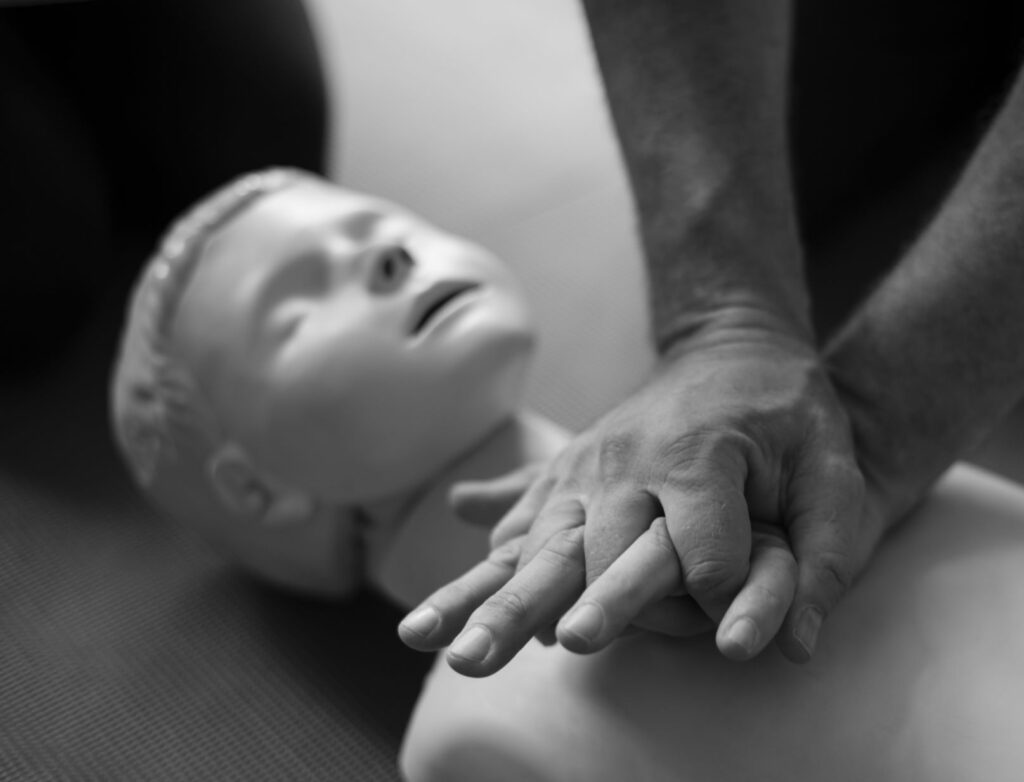In today's busy globe, making sure security in instructional setups has actually ended up being an extremely important problem. Emergency treatment training is essential for educators and childcare suppliers, outfitting them with the abilities and expertise to reply to emergency situations effectively. Nonetheless, the dispute between written and useful parts of emergency treatment training remains to trigger discussions amongst specialists. This short article explores "Created vs Practical Components of Emergency Treatment Training: Locating the Right Equilibrium," aiming to supply insights into how we can achieve a best blend of academic knowledge and hands-on experience.
Understanding the Significance of First Aid Training
Why Is First Aid Training Necessary in Educational Settings?
First aid training serves as a vital lifeline in emergencies, particularly in educational environments where children are typically prone. Every teacher ought to be prepared to reply to situations like choking, injuries during play, or clinical conditions such as asthma.
- Confidence Building: With ideal training, caregivers really feel equipped to act decisively. Child Safety and security: Knowledge of first aid can dramatically reduce threats related to child care safety hazards. Compliance: Lots of laws need childcare personnel to have first aid qualifications, ensuring legal compliance.
The Duty of HLTAID012 Accreditation in Australia
The HLTAID012 certification is crucial for those employed within educational frameworks in Australia. It especially focuses on giving emergency treatment in various contexts, consisting of schools and child care centers.
Key Elements of HLTAID012
Basic Life Support (BLS) Techniques Managing Minor Wounds Epipen Administration Child Defibrillation GuidanceEach component addresses important areas necessary for taking care of emergencies that may arise in an educational setting.
Written vs Practical Components of First Aid Training: Discovering the Right Balance
What Are Created Components?
Written components refer to academic facets of emergency treatment training that often consist of:
- Textbooks and Manuals Online Courses Written Examinations Incident Coverage Protocols
These materials supply fundamental expertise regarding first aid techniques, governing guidelines, and emergency situation action strategies.
Benefits of Composed Learning
Comprehensive Recognizing: Deals outlined information concerning various clinical conditions. Accessibility: Enables individuals to learn at their own pace. Documentation: Supplies a recommendation factor for future use.What Are Practical Components?
Practical elements entail hands-on training experiences that allow individuals to exercise their abilities under practical conditions.
Examples of Practical Exercises
CPR Simulation Choking Prevention Drills Playground Mishaps Feedback ScenariosThese tasks assist strengthen academic understanding via real-world applications.

Advantages of Practical Learning
Skill Proficiency: Enables participants to confidently execute emergency treatment techniques. Immediate Responses: Facilitators can deal with mistakes on the spot. Realistic Experience: Prepares instructors for real emergencies they could face.Striking the Right Balance In Between Created and Practical Training
How Do We Achieve Balance?
Finding balance in between written and sensible elements is crucial for effective knowing results:
- Combine theoretical lessons with sensible simulations. Schedule regular correspondence course that integrate both elements. Encourage peer-to-peer discussions concerning experiences related to case coverage protocols.
Renewal Timelines for Certification
Maintaining accreditation calls for routine revivals-- typically every three years-- to guarantee skills stay current:
|Qualification Kind|Revival Regularity|| ---------------------|------------------|| HLTAID012|Every 3 Years|| Advanced First Aid|Every 3 Years|
This highlights the demand for continual discovering through both written and practical components.
Addressing Certain Situations Through Emergency Treatment Training
Recognising Asthma Symptoms in Children
Understanding asthma signs and symptoms is crucial for educators:
- Shortness of breath Wheezing sounds Persistent coughing
Proper training equips caregivers with tools to identify these indicators early, leading to timely treatments like carrying out medication using an Epipen when necessary.

Managing Minor Wounds Effectively
Wound Go to this website administration is a typical circumstance faced by Wagga Wagga First Aid Course Near Me - First Aid Pro instructors:
Assessing the intensity of injury Cleaning and dressing injuries appropriately Understanding when to rise careEducators should know with these processes through both created instruction and useful demonstrations.
Choking Prevention Techniques
Choking avoidance is crucial in settings where kids exist:
- Teach kids proper eating techniques. Familiarize personnel with Heimlich maneuver procedures.
Both written guidelines and physical technique are important right here; understanding what actions to take is just half the battle-- being able to implement them successfully is equally important.

Childproofing Techniques for Safe Environments
How Can Educators Implement Childproofing Techniques?
Creating risk-free academic atmospheres includes attentive childproofing efforts:
Regularly check playground equipment. Ensure all unsafe products run out reach. Educate parents on childcare safety and security hazards related to home environments.These techniques should be supported by extensive training programs incorporating both theory (composed) and technique (hands-on workouts).
FAQs Regarding Emergency treatment Training
What Is HLTAID012 Give First Aid in Education?
HLTAID012 Offer First Aid in Education describes a nationally recognized program created especially for those functioning within educational settings, focusing on managing emergency situations involving kids effectively while sticking to legal requirements.
Why Are Incidents Coverage Protocols Important?
Incident coverage protocols act as important paperwork tools that track occurrences precisely-- aiding companies evaluate trends over time which can improve safety and security criteria significantly across childcare centers or schools.
What Are Kid Emergency treatment Fundamentals Australia Covers?
Toddler emergency treatment essentials cover vital locations like acknowledging typical youth illnesses (such as fevers), carrying out CPR tailored specifically for kids, handling allergic reactions including epinephrine management, etc, guaranteeing caretakers are well-prepared!
What Ought to Be Consisted of In A Childcare Centre First Aid Package Australia?
A well-stocked childcare center first aid kit should have items such as band-aids, antiseptic wipes, gauze pads, scissors, handwear covers & & a comprehensive guideline overview on making use of these materials effectively!
How Frequently Must Childcare Personnel Take Part In Emergency Treatment Refreshers?
It's suggested that childcare staff participate in refresher courses every year or a minimum of bi-annually; this ensures they remain existing with ideal techniques & & regulatory updates!
What Are Some Secret Points For Providing Infant CPR Australia Guidelines?
When carrying out Baby CPR comply with these key points: make sure air passage clearance by turning back carefully-- a couple of puffs followed by breast compressions if needed! Constantly focus on getting emergency assistance while doing mouth-to-mouth resuscitation up until assistance arrives!
Conclusion
The equilibrium in between written and functional elements in first aid training can not be overemphasized; each aspect enhances the other while reinforcing crucial abilities required within instructional environments nationwide! By committing ourselves towards thorough learning methods-- educators will certainly cultivate more secure spaces where youngsters thrive without anxiety-- ultimately linking voids between concept & & practice effortlessly!
In recap, recognizing just how best we approach "Written vs Practical Elements of First Aid Training: Finding the Right Balance" will certainly empower professionals throughout sectors! So let us spend sufficiently right into our futures today-- for tomorrow awaits its heroes all set at any moment!